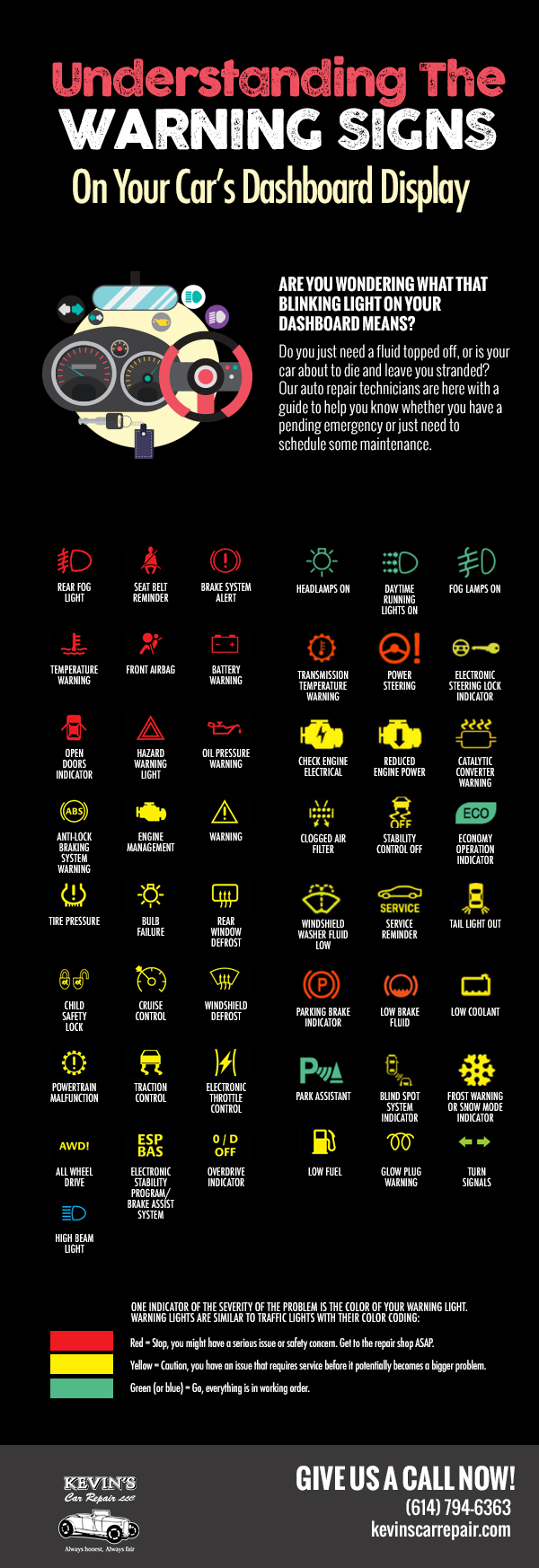A Beginner'S Manual For Understanding The Definition Of Your Automobile'S Warning Signals
A Beginner'S Manual For Understanding The Definition Of Your Automobile'S Warning Signals
Blog Article
Author-Gunter Eriksson
When you're behind the wheel, those little warning lights on your automobile's dashboard can be quite bewildering. What do they mean, and should you be worried? Recognizing these signals is essential for your vehicle's health, yet it does not have to be a daunting job. By decoding the enigma behind each light, you'll be outfitted to manage possible issues successfully and maintain your auto running smoothly. So, following time a caution light flashes, do not panic - arm yourself with understanding and take control of the scenario.
Significance of Automobile Caution Lights
Understanding the importance of your automobile's warning lights is essential for maintaining your automobile's health and safety. These lights work as your vehicle's interaction system, alerting you to prospective problems that can endanger your safety when driving or cause costly repair work if overlooked. By paying attention to these cautions, you can deal with troubles early and prevent further damage to your car.
Overlooking advising lights can result in significant repercussions, such as engine failure, brake breakdowns, or even mishaps. These lights are designed to alert you of concerns ranging from reduced tire pressure to engine malfunctions, giving you the possibility to do something about it prior to the circumstance intensifies. Routinely checking and understanding these cautions can conserve you time, cash, and guarantee your safety and security while driving.
Along with maintaining you safe, reacting immediately to alerting lights can likewise aid prolong the lifespan of your automobile. By dealing with concerns early on, you can avoid little troubles from escalating right into major repairs, inevitably saving you time and money in the future. Bear in mind, your auto's caution lights are there for a reason - do not overlook them!
Common Caution Lighting and Meanings
When it concerns driving your automobile, recognizing typical warning lights and their definitions is essential for your safety and car maintenance. Here are https://oil-change83726.atualblog.com/37333510/tips-for-winterizing-your-car-getting-ready-for-cold-weather-driving might run into:
1. ** Inspect Engine Light **: This light suggests a problem with your engine. https://thumbwind.com/2022/07/22/automotive-mechanic-books/ could be something small like a loose gas cap or something more severe like engine misfiring.
2. ** Battery Light **: This light signals a trouble with your auto's billing system. It can show a defective battery, generator, or other associated elements.
3. ** Oil Pressure Light **: When this light comes on, it suggests your engine may be running low on oil or experiencing reduced oil stress, which can bring about engine damages if not resolved without delay.
4. ** Brake System Light **: This light shows a problem with your braking system. It can suggest reduced brake liquid degrees or a problem with the brake system that calls for instant interest.
Recognizing these usual caution lights will certainly assist you identify prospective issues early on and prevent even more significant problems later on.
Just how to Respond to Warning Lights
In the event that a caution light brightens on your car's dashboard, it's critical to react quickly and suitably. When a caution light begins, the initial step is to consult your proprietor's handbook to understand the certain issue suggested by the light.
Some lights call for immediate attention, while others may show a less immediate matter. If the warning light is red or flashing, it's normally an indicator of a serious problem that needs instant activity. In such instances, it's a good idea to pull over safely, shut off the engine, and look for professional assistance.
For yellow or orange caution lights, while they might not call for instant interest, it's still important to attend to the underlying issue quickly to avoid further damages. Routine upkeep and evaluation can help prevent cautioning lights from beginning suddenly.
Final thought
In conclusion, recognizing your vehicle's warning lights is crucial for maintaining your automobile's health and safety. By consistently examining and reacting to these cautions, you can attend to possible issues early and prevent costly repair services or safety risks. Bear in mind to consult your proprietor's guidebook for details on various caution lights and constantly take prompt activity for red or flashing lights. Remain proactive and keep your car running efficiently!
